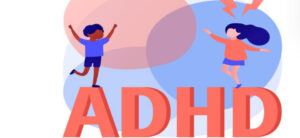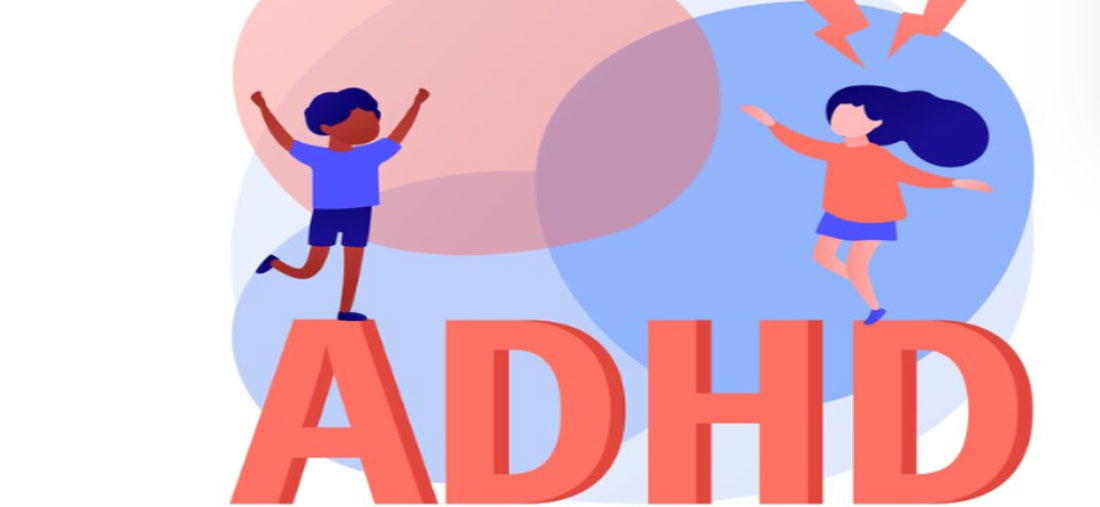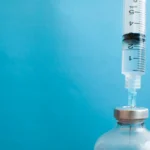Living with attention deficit hyperactivity disorder (ADHD) presents a unique set of challenges and strengths. This neurodevelopmental condition impacts millions globally, affecting how individuals regulate attention, control impulses, and manage activity levels. Understanding ADHD goes far beyond simply being easily distracted; it involves complex differences in brain function that influence daily life across various settings, including school, work, and relationships.

For individuals diagnosed with attention deficit hyperactivity disorder and their families, gaining clear knowledge about the condition is a vital initial step towards effective management and support. This article delves into the nuances of ADHD, offering a detailed overview to help foster better understanding and promote informed approaches to living with it.
What is Attention Deficit Hyperactivity Disorder (ADHD)?
Attention deficit hyperactivity disorder (ADHD) stands as a well-recognized neurodevelopmental disorder. Characterized by persistent patterns of inattention and/or hyperactivity-impulsivity, it interferes significantly with functioning or development. Importantly, ADHD is not a behavioral issue stemming from poor parenting or lack of discipline.
Rather, it involves differences in brain structure and activity, particularly in areas managing executive functions like planning, organizing, prioritizing, and controlling impulses. While commonly diagnosed in childhood, symptoms frequently persist into adolescence and adulthood, adapting in presentation but continuing to impact various facets of life. Therefore, understanding ADHD necessitates recognizing its neurological basis and its lifelong potential impact.
Understanding the Three Primary Presentations of ADHD
Clinicians identify ADHD as manifesting in one of three primary ways, or “presentations,” based on the dominant symptoms displayed over the past six months:
- Predominantly Inattentive Presentation: Individuals primarily struggle with attention, focus, and organization. Hyperactivity and impulsivity are less prominent. Symptoms might include difficulty sustaining attention, being easily distracted, forgetting daily tasks, losing items, appearing not to listen when spoken to directly, and avoiding tasks requiring sustained mental effort. Often, this type is less disruptive behaviorally, potentially leading to underdiagnosis, particularly in girls and adults.
- Predominantly Hyperactive-Impulsive Presentation: This presentation features prominent symptoms of hyperactivity and impulsivity, while inattention is less evident. Symptoms often include fidgeting, squirming, leaving one’s seat when expected to remain seated, difficulty playing quietly, excessive talking, interrupting others, and difficulty waiting one’s turn. These symptoms are typically more noticeable externally, leading to earlier identification in childhood.
- Combined Presentation: This is the most common presentation. Individuals exhibit significant symptoms meeting the criteria for both inattention and hyperactivity-impulsivity. Diagnosed when sufficient symptoms are present from both categories, this form reflects the full spectrum of ADHD characteristics.
Recognizing these different presentations is crucial for accurate diagnosis and developing targeted support strategies for attention deficit hyperactivity disorder.
How ADHD Symptoms Manifest Across the Lifespan
The specific ways attention deficit hyperactivity disorder (ADHD) symptoms appear often change as a person ages.
- In Childhood: Hyperactivity is frequently the most visible symptom. Children may seem constantly in motion, run and climb excessively, or talk non-stop. Inattention might show up as difficulty focusing in class, not finishing homework, or losing toys. Impulsivity can lead to interrupting games, blurting out answers, or taking physical risks without thinking. Boys are diagnosed more frequently than girls, though this may be due to girls’ symptoms (often more inattentive) being less disruptive and therefore overlooked.
- In Adolescence: Hyperactivity may decrease, often transforming into restlessness or fidgeting. Inattention and impulsivity usually remain challenging. Academic demands increase, making organization, time management, and focus crucial areas where ADHD can significantly impact performance. Risky behaviors stemming from impulsivity might also become more pronounced.
- In Adulthood: Symptoms tend to stabilize but can still cause significant challenges. Hyperactivity often presents as feeling restless or having difficulty relaxing. Inattention can impact job performance, leading to missed deadlines or difficulty staying organized. Impulsivity might affect financial decisions, relationships, or driving habits. Many adults with attention deficit hyperactivity disorder are undiagnosed, having developed coping mechanisms over time or attributing their struggles to other factors. Diagnosis in adulthood often occurs when symptoms overwhelm these coping strategies or when a child is diagnosed, leading a parent to recognize similar traits in themselves. Consequently, the presentation of ADHD evolves, yet its core impact on self-regulation persists.
Exploring the Causes and Risk Factors for ADHD
Research strongly indicates that attention deficit hyperactivity disorder (ADHD) has complex roots, primarily linked to genetic and neurological factors. It is not caused by poor diet, excessive screen time, or chaotic home environments, although these factors can sometimes exacerbate symptoms or affect overall well-being.
Genetic studies demonstrate that ADHD often runs in families. Multiple genes are believed to play a role, influencing brain development and function, particularly neurotransmitters like dopamine and norepinephrine, which are vital for attention and reward pathways. Differences in certain brain regions, such as the prefrontal cortex, which is involved in executive functions, have also been observed in individuals with ADHD.
Several risk factors, though not direct causes, are associated with an increased likelihood of developing ADHD. These include premature birth or low birth weight, maternal smoking or alcohol use during pregnancy, and exposure to environmental toxins like lead in early childhood. Traumatic brain injury, although rare, can also sometimes result in ADHD-like symptoms. Therefore, understanding ADHD involves recognizing its biological underpinnings rather than environmental culprits commonly cited in myths.
The Process of Diagnosing ADHD
Diagnosing attention deficit hyperactivity disorder (ADHD) requires a comprehensive evaluation conducted by a qualified healthcare professional, such as a pediatrician, psychologist, psychiatrist, or neurologist. There is no single test, like a blood test or brain scan, that can definitively diagnose ADHD.
The diagnostic process typically involves several steps:
- Clinical Interview: The clinician interviews the individual (or parents, for children) to gather detailed information about symptoms, when they began, how long they’ve persisted, and how they impact daily life across multiple settings (e.g., home, school, work).
- Rating Scales: Standardized behavior rating scales are completed by parents, teachers, or the individual themselves. These scales help compare the individual’s behavior to others of the same age and gender.
- Information from Multiple Sources: Input from teachers, family members, and sometimes employers provides crucial insight into how symptoms manifest in different environments.
- Review of Medical and Family History: This helps identify any co-occurring conditions or family history of ADHD.
Physical Exam: Sometimes performed to rule out other medical conditions that might cause similar symptoms.
Diagnosis is based on the criteria outlined in the Diagnostic and Statistical Manual of Mental Disorders (DSM-5), requiring a specific number of persistent symptoms of inattention and/or hyperactivity-impulsivity that began before age 12 and interfere with functioning in at least two settings. Accurate diagnosis of attention deficit hyperactivity disorder is crucial for accessing appropriate support and treatment.
Living with Attention Deficit Hyperactivity Disorder
Living with attention deficit hyperactivity disorder (ADHD) presents ongoing challenges related to executive functions. Individuals may struggle with organization, time management, planning, task initiation, and emotional regulation. These difficulties can impact academic performance, career progression, household responsibilities, and personal relationships. Daily tasks that others find routine, like paying bills on time or completing chores, can feel overwhelming.
However, it is equally important to recognize the many strengths often associated with ADHD. Individuals frequently possess high levels of energy, creativity, and the ability to think outside the box. They can be spontaneous, adaptable, and possess a unique sense of humor. When engaged in subjects or tasks they find genuinely interesting, many individuals with ADHD can exhibit hyperfocus—an intense, sustained concentration that can be incredibly productive. Understanding ADHD means appreciating this duality of challenges and inherent strengths.
ADHD and Common Co-occurring Conditions
Attention deficit hyperactivity disorder (ADHD) frequently co-occurs with other conditions, complicating both diagnosis and treatment. Understanding these co-occurring issues is vital for comprehensive care. Common co-occurring conditions include:
- Anxiety Disorders: Affecting many individuals with ADHD, anxiety can manifest as excessive worry, restlessness, and physical symptoms, often exacerbating the challenge of focusing attention.
- Depression: Mood disorders like depression are common. The persistent challenges of living with ADHD can contribute to feelings of frustration, low self-esteem, and sadness.
- Learning Disabilities: Conditions such as dyslexia or dyscalculia can co-occur, impacting academic progress and requiring specific educational support in addition to ADHD management.
- Oppositional Defiant Disorder (ODD) and Conduct Disorder (CD): These behavioral disorders involve patterns of defiant or aggressive behavior and require targeted behavioral interventions.
- Sleep Disorders: Difficulties falling asleep, staying asleep, or restless sleep are common in individuals with ADHD, further impacting focus and mood.
- Substance Use Disorders: Adolescents and adults with untreated ADHD may be at higher risk for substance use, potentially as a way to self-medicate symptoms.
Addressing these co-occurring conditions is crucial because they can significantly impact the effectiveness of ADHD treatment and overall quality of life. Comprehensive evaluation is essential to identify and manage all present conditions.
Treatment Approaches for ADHD
Effective management of attention deficit hyperactivity disorder (ADHD) typically involves a multi-faceted approach tailored to the individual’s specific needs and age. Treatment plans often combine medication, therapy, behavioral interventions, and lifestyle adjustments.
Medication for ADHD
Medication is a common and often highly effective treatment option for ADHD. Stimulant medications (like methylphenidate and amphetamines) are most frequently prescribed. They work by increasing dopamine and norepinephrine levels in the brain, improving attention and reducing hyperactivity/impulsivity. Non-stimulant medications are also available and can be beneficial for those who don’t respond to stimulants or experience side effects. Finding the right medication and dosage often requires a period of adjustment under medical supervision.
Therapy and Behavioral Interventions
Behavioral therapy is a cornerstone of ADHD treatment, particularly for children, and is also beneficial for adolescents and adults. Cognitive Behavioral Therapy (CBT) helps individuals identify and change negative thought patterns and behaviors related to their ADHD. Parent training provides strategies for managing challenging behaviors in children. School-based interventions, such as classroom accommodations (preferential seating, extended time), are vital for academic success. For adults, coaching focused on organizational skills and time management can be very helpful.
Lifestyle Management for ADHD
Certain lifestyle factors can significantly support ADHD management. Regular physical exercise is highly recommended as it can help improve focus, reduce hyperactivity, and boost mood. Maintaining a consistent sleep schedule is crucial, as sleep deprivation can worsen ADHD symptoms. Paying attention to diet and ensuring balanced nutrition can also play a supporting role, although dietary changes alone do not cure ADHD. Mindfulness techniques and stress reduction strategies can further aid in managing emotional regulation and improving focus.
Practical Strategies for Managing ADHD
Beyond formal treatment, implementing practical strategies can greatly assist individuals living with attention deficit hyperactivity disorder.
- Establish Routine and Structure: Predictable daily routines help provide a framework for managing tasks and time.
- Use Organizational Tools: Employ planners, calendars, to-do lists, reminder apps, or color-coding systems to keep track of appointments, assignments, and tasks.
- Break Down Tasks: Large tasks can be overwhelming. Breaking them into smaller, more manageable steps makes them less daunting and easier to start and complete.
- Minimize Distractions: Create a quiet workspace or study area free from interruptions. Use noise-canceling headphones if necessary.
- Time Management Techniques: Use timers for tasks, schedule specific blocks for work and breaks, and estimate how long tasks will actually take.
- Prioritize Tasks: Learn to identify the most important tasks and tackle them first.
- Effective Communication: Practice clear and direct communication. For children, use simple instructions and visual aids. For adults, request information be presented concisely.
- Seek Support: Connect with support groups, friends, family, or mental health professionals who understand ADHD. Sharing experiences and strategies can be invaluable.
- Advocate for Accommodations: Understand your rights for reasonable accommodations in educational or work settings if needed.
Implementing these strategies consistently requires practice and patience but can lead to significant improvements in daily functioning for individuals with attention deficit hyperactivity disorder.
ADHD Awareness and Finding Support
Increasing understanding and reducing stigma surrounding attention deficit hyperactivity disorder (ADHD) are crucial steps for individuals and society. Misconceptions about ADHD as merely a behavioral issue or a result of laziness can be harmful. Educating the public and promoting accurate information helps create a more supportive environment.
Finding a supportive community can be incredibly beneficial. Connecting with others who share similar experiences can provide emotional support, practical tips, and a sense of not being alone in the journey of living with ADHD. Support groups for individuals with ADHD, parents of children with ADHD, and partners can be found through local organizations or online.
Advocacy groups also play a vital role in raising awareness, promoting research, and ensuring access to resources and accommodations. Seeking professional guidance from therapists, coaches, or medical doctors specializing in ADHD provides tailored support and treatment strategies.
Living Successfully with ADHD
Attention deficit hyperactivity disorder (ADHD) is a complex neurodevelopmental condition impacting attention, activity, and impulsivity across the lifespan. It stems from biological differences, not a lack of effort. While presenting unique challenges in areas like organization, focus, and self-regulation, individuals with ADHD also possess distinct strengths, including creativity, energy, and the capacity for hyperfocus.
Accurate diagnosis of attention deficit hyperactivity disorder, ideally through a comprehensive evaluation, is the gateway to effective management. Treatment typically involves a combination of approaches such as medication, behavioral therapies, and lifestyle adjustments, tailored to the individual’s needs. Furthermore, implementing practical strategies, managing co-occurring conditions, and seeking support from family, friends, and support networks are all vital components of living successfully with ADHD.
With understanding, appropriate support, and effective strategies, individuals with attention deficit hyperactivity disorder can navigate challenges, leverage their strengths, and lead fulfilling lives. Continued awareness and education are essential to foster acceptance and reduce stigma associated with this common condition.








